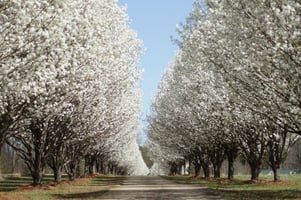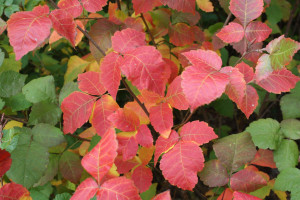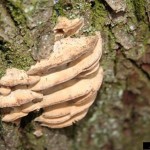Hosted by the Missouri Invasive Plant Council and Forest ReLeaf. Bradford pear trees are the trees...
Bradford Pears: Why We Remove Them and What to Plant Instead

This time of year, it is quite common to see conservation departments, local nurseries, and tree companies spreading the word about removing Bradford Pear Trees. But why?
Bradford pears, while initially popular for their ornamental value, have become problematic due to their invasive nature and weak branch structure. These trees are known to outcompete native species, reducing biodiversity and disrupting ecosystems. Their branches are also prone to splitting, especially during storms, posing safety hazards. Removing Bradford pears is crucial to restore balance to local environments and promote the growth of native species that are better suited for our ecosystem.
There are wonderful native alternatives to Bradford pears that offer numerous benefits. Trees like Redbud, Yellowwood, Choke Cherry, Fringe Tree, and Serviceberry not only provide beautiful blooms but also support local wildlife by offering food and habitats. These native species are adapted to the local climate and soil conditions, requiring less maintenance and fewer resources once established. By planting native trees, we can enhance the resilience of our ecosystems, attract pollinators, and create a more sustainable environment for future generations.
Replacing Bradford pears with native trees promotes ecological harmony and preserves the natural heritage of an area. Native trees have co-evolved with other local species over time, forming intricate relationships that support the overall health of the ecosystem. By choosing native species, we contribute to the restoration of the local ecosystem's balance and help mitigate the negative impacts of invasive species like Bradford pears.
Native trees also offer a sense of place and connection to the region's unique environment and history. They can provide shade, improve air quality, and reduce erosion, benefiting both humans and wildlife. By planting a variety of native trees, we can create a diverse and resilient urban forest that enhances the aesthetic appeal of our neighborhoods while also supporting the ecological integrity of the area.
Removing Bradford pears and replacing them with native tree species is a crucial step towards promoting biodiversity, supporting local ecosystems, and creating sustainable landscapes. By choosing native alternatives, we can contribute to the preservation of our natural heritage, enhance the health of our environment, and create more resilient communities for generations to come.
St. Louis Tree Pros
314-312-1331
info@stltreepros.com



